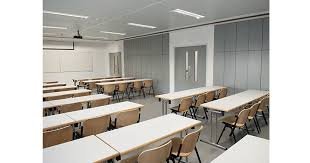
school chairs
In the realm of education, countless elements contribute to a student’s academic success—from qualified teachers and well-designed curricula to advanced learning technologies. However, one often-overlooked factor with a surprisingly significant impact on learning is furniture, specifically the school chair. The quality, ergonomics, and design of a school chair directly affect student comfort, posture, concentration, and even academic performance. In many classrooms around the world, students spend six or more hours each day seated, making the choice of seating more than just a logistical detail—it becomes a critical educational tool. This article explores the evolution, functionality, ergonomic significance, and psychological influence of school chairs, and highlights why investing in the right seating solutions is essential for the physical and cognitive development of students.
The Evolution of the School Chair
The history of classroom furniture parallels the development of formal education itself. Early learning environments, such as one-room schoolhouses in the 19th century, featured rudimentary wooden benches or fixed desks with attached seats. These designs prioritized economy and durability over comfort. As educational philosophies evolved to focus more on child development, so too did the furniture. The introduction of adjustable chairs and individual seating in the 20th century signaled a shift toward accommodating the physical diversity of students. Modern school chairs are now designed with specific age groups in mind, reflecting advances in ergonomics, biomechanics, and educational psychology. Furniture is no longer static—it is dynamic, mobile, and built for interaction and flexibility in a learning space that is increasingly collaborative.
Ergonomic Design and Student Health
One of the most important aspects of a school chair is its ergonomic design, which is essential to support the postural health of growing children. Poorly designed chairs contribute to a range of physical problems, including back pain, muscle fatigue, and poor circulation, all of which can negatively affect attention and academic output. Proper school chairs are built to promote a neutral spine position, maintain hip-knee alignment, and allow for natural movement. Adjustable seat heights, lumbar support, and backrests that contour to a child’s spine are all features of a well-constructed school chair. Schools that fail to invest in ergonomic furniture risk creating an environment where students are physically distracted, uncomfortable, and ultimately less focused on learning.
Influence on Concentration and Performance
Research has shown a strong connection between physical comfort and mental concentration. Students seated in poorly designed chairs may constantly shift, slump, or fidget in an attempt to find comfort, all of which divide their attention from academic tasks. On the other hand, when a student is well-supported, their body is less of a distraction and their cognitive load can be devoted entirely to learning. Proper posture facilitated by quality school chairs can also enhance blood circulation to the brain, which is crucial for memory retention and problem-solving. Classrooms designed with ergonomic seating are proven to improve student engagement, reduce fatigue, and encourage active learning. This makes the chair not just a passive object, but a tool for cognitive empowerment.
Customization by Age and Learning Needs
No single chair can suit every student, which is why age-appropriate design is critical. Primary school students require smaller chairs with lower seat heights, while high school and university students need chairs that support longer sitting durations. In addition, the rise in inclusive education means chairs must accommodate students with various physical disabilities, sensory needs, and neurodiversity, such as those with ADHD or autism spectrum disorder. Schools that use modular and adjustable furniture ensure that every child has an equitable learning experience. The ability to customize furniture to meet individual needs not only supports comfort but also communicates a message of inclusion and respect for diversity in the classroom.
Materials, Safety, and Sustainability
Modern school chairs are made from a range of materials including polypropylene plastic, metal frames, and even sustainable wood. These materials are selected not only for durability but for safety standards such as resistance to tipping, fire retardancy, and the absence of sharp edges. Increasingly, schools are looking for eco-friendly solutions that align with global efforts to reduce environmental impact. Recyclable and non-toxic materials are becoming standard in many educational institutions, with governments and school boards encouraging green procurement policies. This shift supports both student health and environmental stewardship, preparing students for a future where sustainability is a shared responsibility.
Psychological Impact and Learning Culture
A school chair might seem insignificant, but its influence on learning culture is profound. Clean, modern, and comfortable seating can signal to students that their education is valued and that they are learning in a safe, supportive environment. It boosts morale, encourages better behavior, and fosters pride in the classroom. On the contrary, worn-out or outdated furniture sends a message of neglect, which can decrease motivation and school engagement. Even the color psychology of chairs—such as calming blues or stimulating oranges—can subtly influence mood and focus. Furniture thus plays a key role not only in the physical learning environment but in the emotional and social development of students.
The Future of School Chairs
As education continues to evolve with technology, remote learning, and flexible classroom design, school chairs must also adapt. The future points toward smart furniture with features like sensors to measure posture, temperature regulation, and even connectivity to digital devices. Chairs will be expected to be mobile, stackable, and designed for collaborative group learning. With the increasing importance of project-based learning and maker spaces, school chairs will need to support diverse activities beyond passive sitting. Future-ready furniture will combine form, function, and data-driven design to keep pace with the changing demands of education.
Conclusion
While they may appear ordinary, school chairs are a vital yet underappreciated component of the educational experience. From ensuring physical well-being and mental focus to supporting inclusive education, eco-consciousness, and classroom engagement, the humble chair plays a powerful role in shaping how and what students learn. Investing in high-quality, ergonomic, and adaptable seating is not a luxury but a necessity in the quest for effective education. As schools seek to prepare students for an ever-changing future, the design and thought put into something as simple as a chair can make all the difference between passive attendance and active, inspired learning.






